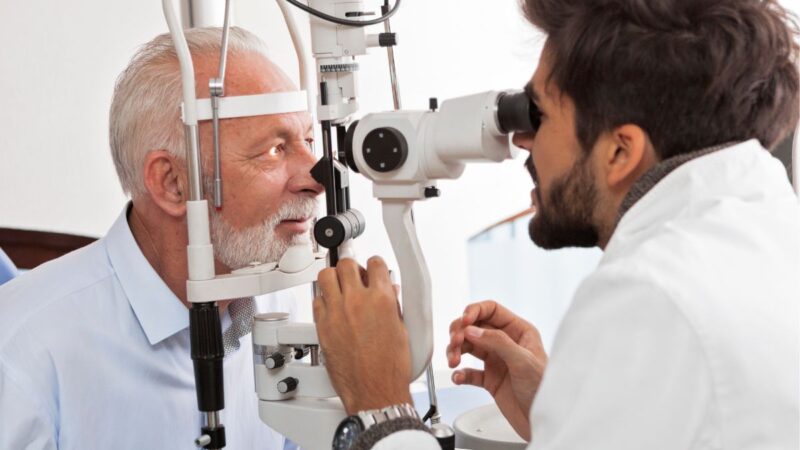Andalusia Pediatrics: Compassionate Take Care Of Your Children
Andalusia Pediatrics: Compassionate Take Care Of Your Children
Blog Article
The Pros and Disadvantages of Different Refractive Surgical Procedures for Boosted Eyecare

LASIK Surgery
LASIK surgical procedure is a generally performed refractive procedure that aims to correct vision issues such as farsightedness, nearsightedness, and astigmatism. During the procedure, a thin flap is created on the cornea, and a laser is utilized to reshape the underlying tissue, fixing the refractive mistake.
One of the main advantages of LASIK surgical treatment is the rapid enhancement in vision experienced by many individuals. It is vital for individuals taking into consideration LASIK surgical treatment to undertake a thorough examination by an eye care expert to establish if they are suitable prospects for the treatment.
PRK Procedure
The PRK procedure, also understood as Photorefractive Keratectomy, is a kind of refractive surgical procedure that intends to correct vision issues similar to LASIK surgical treatment. Unlike LASIK, which includes producing a flap in the cornea, PRK functions on the surface area layer of the cornea.
One of the advantages of PRK over LASIK is that it gets rid of the danger of flap-related issues given that no flap is developed throughout the surgery. Despite the longer recovery period, PRK can be a suitable alternative for people seeking vision correction surgical procedure.
SMILE Surgical Treatment
An innovative refractive surgical treatment technique obtaining appeal in the field of ophthalmology is SMILE Surgical procedure. Little Incision Lenticule Removal (SMILE) is a minimally intrusive procedure that deals with vision by reshaping the cornea using a femtosecond laser. Unlike typical LASIK surgical treatment, SMILE Surgery entails producing a tiny cut in the cornea to extract a lenticule, which causes less disturbance to the corneal structure and possibly quicker recuperation times.
Among the primary benefits of SMILE Surgery is its capability to deal with nearsightedness (nearsightedness) and astigmatism with high precision, bring about superb aesthetic outcomes for individuals. The minimally invasive nature of the treatment also lowers the danger of complications such as dry eye disorder, making it a positive option for people seeking refractive surgical procedure.

LASEK Method
Having actually explored the advantages and considerations of SMILE Surgical procedure, one more noteworthy refractive surgical procedure method worth analyzing is the LASEK Strategy. LASEK, which means Laser-Assisted Subepithelial Keratectomy, is a form of laser eye surgical procedure that aims to remedy refractive mistakes such as nearsightedness (nearsightedness), hyperopia (farsightedness), and astigmatism.
Unlike LASIK, LASEK does not include developing a corneal flap. Rather, throughout a LASEK procedure, the cosmetic surgeon uses a diluted alcohol solution to loosen the thin external layer of the cornea, known as the epithelium.
One of the primary benefits of LASEK is that it can be ideal for individuals with thin corneas that might not be good prospects for LASIK. In addition, LASEK usually causes minimal post-operative discomfort and a quicker recuperation time contrasted to PRK. However, the aesthetic recuperation process with LASEK might be a little longer than with LASIK.
Implantable Contact Lenses
Implantable Contact Lenses supply a lasting vision correction option for people looking for a choice to typical call lenses or glasses. These lenses, likewise referred to as phakic intraocular lenses, are operatively placed into the eye to fix refractive mistakes such as nearsightedness (nearsightedness), hyperopia (farsightedness), and astigmatism. neurologist Andalusia. Unlike traditional get in touch with lenses that rest on the surface area of the eye, implantable get in touch with lenses function within the eye itself, supplying clear vision without the need for day-to-day upkeep or removal
One of the crucial benefits of implantable get in touch with lenses is their permanence. As soon Visit Website as put, they can stay in the eye forever, supplying consistent and stable vision adjustment. Additionally, these lenses can be an excellent alternative for people who are not great candidates for laser eye surgical treatment or who favor a reversible vision modification treatment.
Nevertheless, implantable get in touch with lenses do carry some threats, consisting of the potential for cataracts or boosted eye pressure. It is critical for individuals considering this option to consult with an eye care professional to figure out if implantable contact lenses are the appropriate choice for their specific needs and eye health and wellness.
Verdict
To conclude, each sort of refractive surgical treatment has its very own benefits and negative aspects. LASIK surgery is prominent for its quick healing time, while PRK treatment may appropriate for individuals with slim corneas. SMILE surgery provides very little pain throughout the treatment, however LASEK technique might have a longer healing procedure. Implantable get in touch with lenses offer an option for those who are not appropriate candidates for traditional surgical procedures. People should seek advice from their eye treatment copyright to establish the most effective option for their individual requirements.

On The Whole, SMILE Surgical treatment presents an encouraging alternative for individuals looking to boost their vision with refractive surgical procedure.
Report this page